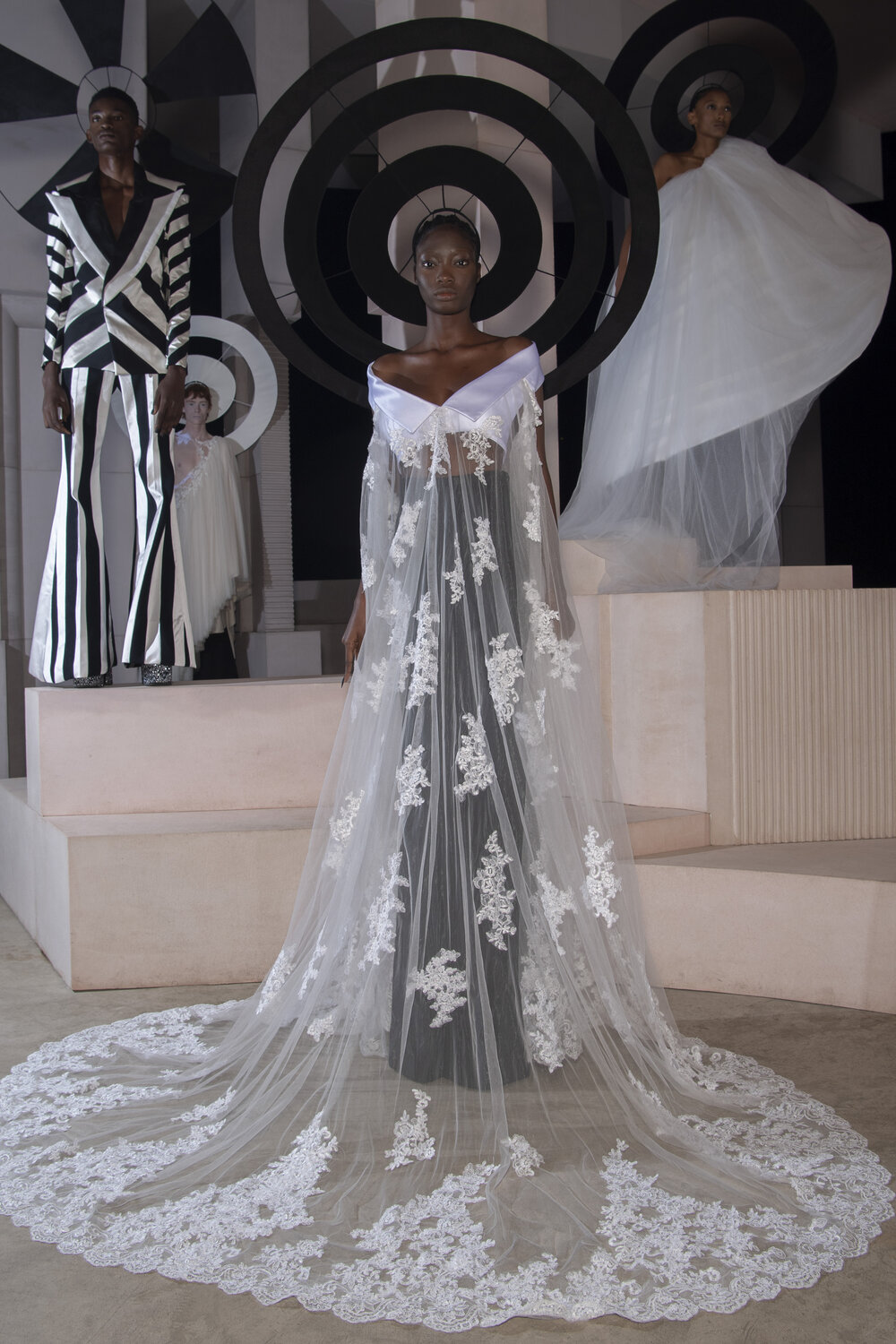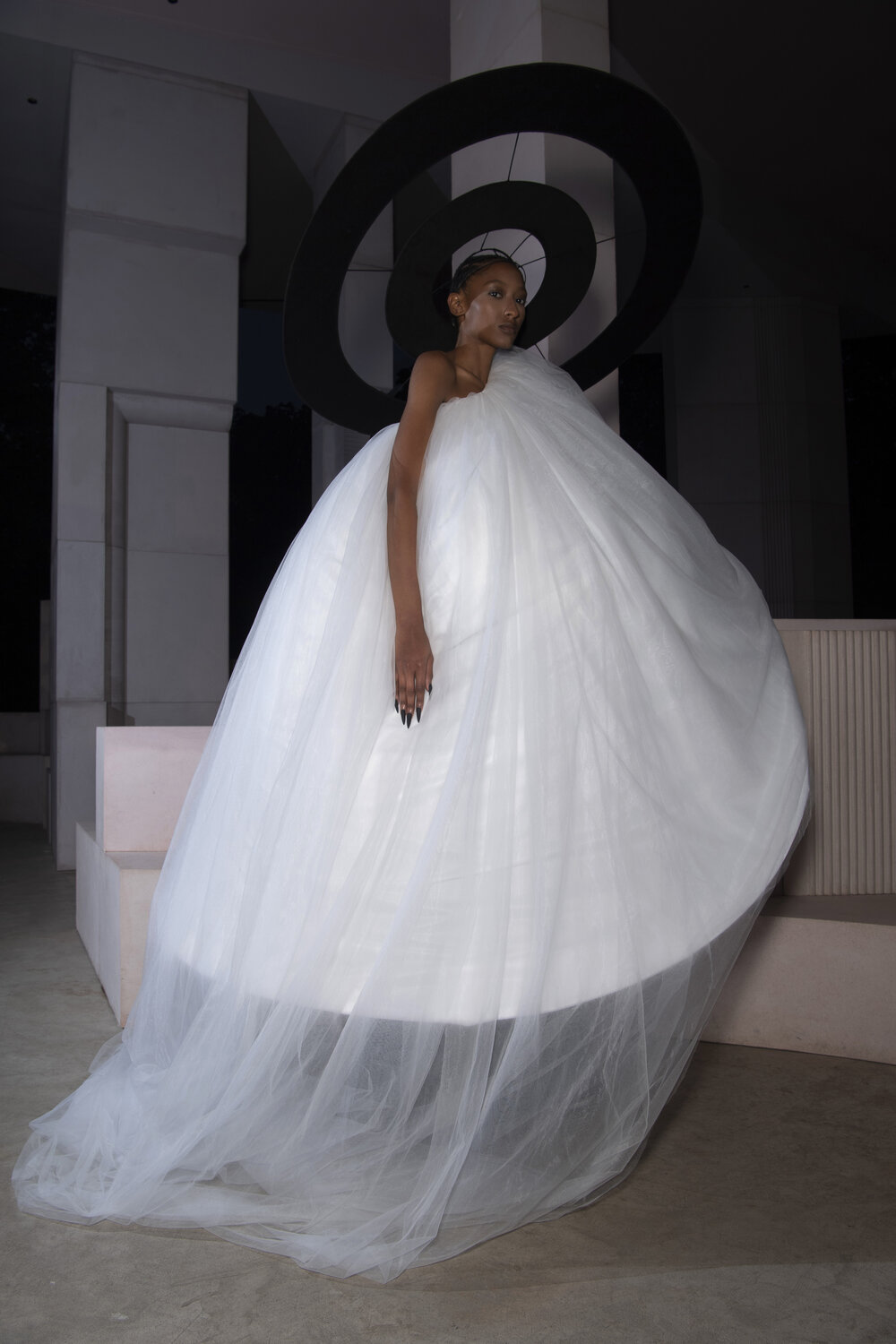Harris Reed presented his Spring 2022 Ready-to-Wear collection last Tuesday, September 21st, closing up this year’s edition of London Fashion Week. The twenty-five-year-old fashion icon has been gaining media attention ever since he began designing pop singer Harry Styles’ outfits. Reed’s LFW debut was already filled with inovation: in intimate show was presented to an audience of fourty people who saw ten repurposed looks and zero waste. Check this out!
Harris Reed is a very young fashion designer who has been achieving quite an impressive recognition throughout the industry: at twenty-five years old, he graduated from the British art and design college Central Saint Martin in 2020 and recently made his London Fashion Week debut. The half-American, half-British designer likes to play with fluidity’s beauty, in pieces that instigate conversation and that circulate between concepts of masculiny and femininity. Reed’s creations are described by him as belonging to a “Romanticism Gone Nonbinary” style, where clothes can have trasformative power as well as they can correlate to identity and liberation. Harris, who is far from any other average emerging designer you have ever heard of, had the luck to meet and collaborate with stylist Harry Lambert while still in college. This opportunity granted him the chance to work with celebrities such as Solange, Ezra Miller, Alessandro Michele, and, most importantly, Harry Styles – just the right image to represent the designer’s fluid romanticism – and his over thirty-nine million social media followers. Lots of media buzz came from his partnership with the pop artist, who seems to perfectly embrace Reed’s vision of fashion as a tool to promote self-love, acceptance, revolution and expression. Moreover, Reed seeks inspiration for his work from current social and political issues, in an attempt to fight injustices and promote conversation about inequality.

Photo Credit: Evening Standard

Photo Credit: Pay Goods
Closing LFW on his own manner, Harris Reed introduced his demi-couture collection in an intimate and off-schedule presentation that took place on Tuesday, September 21st at the Serpentine Pavilion, in Hyde Park, London. Fourty attendees watched Reed’s show accompanied by artist Kelsen Lu’s performance, and were later directed to a gathering for drinks offered by the gallery’s CEO. The collection, which showed a playful costume appeal, was comprised of only ten looks made out of extravagant fabrics, recycled materials and second-hand garments that gained new life. The designer sourced bridal and groom’s articles from British charity chain Oxfam and repurposed them into a mixture of gowns and tuxedos with a total of zero waste. In fact, the decision of using bridalwear came from Reed’s idea of giving new life to clothes made for someone’s most special day that were now simply wasting away. Besides, it opened the designer’s mind to reimagining traditional garments and turn them into sources of gende fluidity and freedom. According to Harris, his biggest lesson from graduating during the Covid-19 pandemic was the urgent need to become more resourcesul and use everything that is accessible and available. To complete the looks, huge headpieces in spherical format – Reed’s trademark – were added, reinforcing his maximalist ideal that “everything is about being huge and being seen”. Dresses were cut in resourceful and imaginative ways, garments were reconstructed with big lapels, romantic Renaissance lace panels and intricate pearl-emboidery were placed over tailored tuxedos and matched to flared pants, in an elevated concept. The striped suit was made out of strips of fabric cut out from second-hand pieces, and its glam rock look was a tribute to David Bowie. Reed also played with proportions and volume by cropping tuxedo jackets and adding long tules to them. The collection was entirely composed by black-and-white looks mixing pieced from traditional men and womenswear. The garments showcased in this line will solely be available for purchase to private clients, apart from one piece that will be publicly displayed at Oxfam’s Selfridges space and sold for charity purposes.
Reed’s success is a product of his extensive efforts over social media platforms during the pandemic, especially on Instagram. As a result of a social media fan culture, Harris increased in popularity by having his name associated with other celebrities, to the point of becoming himself a star. Reed is drawing his own path in the fashion system, as a brand without a brand, fighting agaist some of the fashion shows’ guidelines, since he believes that “it’s a time of really pushing for what you believe in and pushing for your messaging”. For him, a balance between commerce, vision, and design is much needed.
Published by HOLR Magazine.











